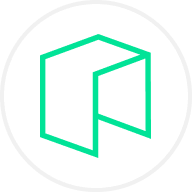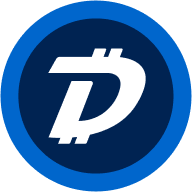aelf (ELF) è emerso come esempio di progetto che sta portando la tecnologia blockchain a un livello superiore. In un settore che si è evoluto rapidamente dalla sua nascita poco più di dieci anni fa, aelf si distingue per l'approccio innovativo e l'impegno al miglioramento continuo. Con una struttura stabile e scalabile, aelf offre alle aziende la piattaforma ideale per costruire e gestire le proprie applicazioni.
Inoltre, aelf non si limita a fornire una blockchain, ma offre una serie di strumenti e risorse per potenziare gli sviluppatori e promuovere un ecosistema fiorente. Questa dedizione all'avanzamento e al coinvolgimento degli sviluppatori distingue aelf nel panorama in continua evoluzione della blockchain.
Che cos'è aelf?
aelf è un'innovativa rete blockchain open source progettata come soluzione aziendale completa. A differenza dei sistemi blockchain tradizionali, aelf utilizza un'architettura unica che consiste in una blockchain principale con più sidechain. Questa struttura consente agli sviluppatori e alle aziende di creare e gestire i propri ecosistemi. Consentendo una distribuzione indipendente e utilizzando delle applicazioni decentralizzate (DApps) su catene laterali separate, aelf consente di isolare le risorse e di ottenere un'efficienza ottimale. .
Il team del progetto aelf
Il progetto aelf è stato creato nel 2017 da un team di sviluppatori blockchain qualificati ed esperti, guidati da Ma Haobo. Il loro obiettivo principale era quello di sviluppare una piattaforma che rispondesse alle esigenze degli sviluppatori, fornendo loro un ambiente sicuro, scalabile e ad alte prestazioni per creare applicazioni.
Come funziona aelf?
aelf opera su una struttura tecnologica unica che incorpora un modello di elaborazione parallela ed il sua innovativo meccanismo di consensus aelf Delegated Proof of Stake (AEDPoS). Come il Delegated Proof of Stake (DPoS), AEDPoS migliora l'efficienza e la scalabilità della rete.
L'ecosistema aelf si basa sulla tecnologia cross-chain, utilizzando l'indice della catena principale e i meccanismi di verifica. Questo design intelligente facilita la comunicazione sicura tra la catena principale e le varie catene secondarie, consentendo una perfetta integrazione e interazione all'interno della rete aelf.
ELF: il token nativo di aelf
Il token ELF è la criptovaluta nativa dell'ecosistema aelf. Lanciato a fine dicembre 2017, il token ELF è stato progettato con un'offerta massima di 1 miliardo, che rappresenta la sua offerta totale. Nel luglio del 2023, circa il 62,22% dell'offerta di ELF tokens sono in circolazione, che rappresentano 622,19 milioni di unità.
Casi d'uso di ELF
Il token del progetto ELF offre una serie di vantaggi. Ad esempio, coloro che puntano su ELF possono diventare nodi e unirsi alle decisioni d'orientamento. Il sistema dei nodi prevede diversi ruoli, come nodi di produzione, nodi candidati e votanti. Ciò consente ai titolari di partecipare alle votazioni e di contribuire alle scelte del progetto. Gli utenti utilizzano gli ELF anche per coprire i costi delle transazioni e delle attività della catena parallela. Inoltre, gli sviluppatori possono usare ELF per acquistare token di risorse, come i token speciali che aiutano a creare progetti sulla piattaforma aelf.
Distribuzione di ELF
La distribuzione dei token ELF è la seguente:
- Il 25% è stato assegnato alla fondazione, soggetto a un vesting period di tre anni.
- Il 25% è stato venduto alla vendita privata.
- Il 16% è stato trattenuto dal team, con un vesting period di 2 anni.
- Il 12% è stato riservato a scopi di mining.
- Il 7% è stato assegnato ai consulenti, con un vesting period di due anni.
- Il 7% è stato riservato a scopi di marketing.
- Il cinque per cento è stato distribuito alla comunità attraverso airdrops.
- Il tre percento è stato utilizzato per finanziare partnership.
Il futuro di ELF
Finora l'ELF è riuscita a creare un ecosistema che supporta efficacemente le DApp. A seconda delle esigenze degli sviluppatori, questo ecosistema è progettato per fornire sia connessioni che separazione. Come le parachains di Polkadot, le sidechain di aelf consentono agli utenti di operare nel proprio ambiente pur rimanendo collegati alla catena principale.
ELF continua a lavorare duramente per affermarsi nel settore. Il suo recente aggiornamento alla versione 1.4.1 della rete principale è un altro passo verso questo obiettivo. Questo aggiornamento ha migliorato le prestazioni di trasmissione dei dati utilizzando lo streaming gRPC e ha migliorato la comunicazione tra i nodi della rete aggiungendo il supporto per lo streaming gRPC bidirezionale.



















Social